Reaction Time Improvement: Practical Strategies and Benefits
Updated On: November 12, 2025 by Aaron Connolly
Understanding Reaction Time
Reaction time is basically the gap between noticing something and moving to deal with it. Your nervous system runs the show, processing stuff you see or hear and deciding how fast you can react—whether that’s in gaming, sports, or just everyday life.
Definition and Mechanisms
Reaction time is that blink-of-an-eye moment between sensing a stimulus and starting your physical response. It’s a skill that can mean dodging a pothole or landing a perfect shot in a game.
It breaks down into two main parts:
- Stimulus detection time – how quickly your brain notices the input
- Response execution time – how fast your brain tells your muscles to act
The steps are pretty quick. First, your sensory organs pick up something from the environment. Your central nervous system processes it and figures out what to do.
Next, nerve signals shoot out to your muscles to make the move. Each step is fast—just a few milliseconds.
Most people react to visual stimuli in about 250 milliseconds. Elite athletes? They usually get down to 150-175 milliseconds with training and a bit of natural talent.
Gamers need similar speed, especially in esports where every split second really counts.
Central and Peripheral Nervous System Roles
Your central nervous system is like mission control for reaction speed. The brain sorts through incoming info and picks a response from its memory bank.
The motor cortex plans out the movement, and the cerebellum makes sure the timing and accuracy are on point. Sensory areas figure out what you’re seeing, hearing, or feeling.
Want a quick tip? Practicing specific game scenarios over and over helps your brain process them faster.
Your peripheral nervous system passes messages between your brain and muscles. Myelin-wrapped nerve fibers send signals way faster than ones without insulation.
Motor neurons carry orders from your spinal cord to your muscles. Sensory neurons bring back updates about your body’s position and movement.
These connections matter—a lot. Practicing regularly builds stronger, faster pathways, so your responses become almost automatic.
Reaction Time vs Reflexes
Voluntary movements need you to think and decide. If you spot an enemy player and choose to shoot, that’s reaction time at work.
Your brain recognizes the threat, picks the best move, and tells your body what to do. Several brain areas work together to pull this off.
Reflexes are a different story. The spinal cord handles these quick, automatic responses, like yanking your hand away from something hot.
Reflexes protect you before your brain even weighs in. They’re way faster than conscious reactions.
| Reaction Time | Reflexes |
|---|---|
| Needs conscious thought | Automatic response |
| 150-300+ milliseconds | 50-100 milliseconds |
| Can be trained and improved | Not much room for improvement |
| Used in gaming decisions | Used for protection |
Gamers rely mostly on conscious reaction time, not pure reflexes. You’re making choices based on what you see every second.
Factors Affecting Reaction Speed
Physical factors have a big impact. Age slows things down—most people notice slower reactions after 30.
Sleep really matters. Bad sleep makes your reactions slower and less accurate.
Long gaming sessions? Fatigue sets in and slows you down. Taking breaks helps keep you sharp.
Cognitive elements are just as important. Focused attention lets you spot things faster, but distractions drag you down.
If you can anticipate what’s coming, you’ll react faster. Experienced gamers get good at predicting enemy moves and getting into position early.
Pattern recognition helps you handle familiar situations more quickly. The more you’ve seen something, the faster you’ll react.
Here’s a heads-up: Trying to multitask during competitive gaming splits your focus and slows your reaction time a lot.
How fast you make decisions matters, too. Practicing certain scenarios helps you build automatic responses for situations you see a lot.
The Importance of Improving Reaction Time
When we react faster, we make better decisions in daily life and stay safer on the road. Athletes get a real advantage in sports, and workers do better in jobs that need quick responses.
Benefits in Everyday Life
Fast reactions help us brake in time while driving when something unexpected pops up. Studies show good reaction time can lower accident risk by giving us those extra milliseconds to act.
We also get a boost in simple tasks. Quick reactions let us catch falling objects or avoid tripping over stuff.
Being quicker means we can handle more at once. Cooking? Fast reactions help us flip food at the right time or turn off the stove before things burn. These little things can make life a bit less stressful.
If we keep working on reaction time, we stay mentally sharp as we age. People who practice reaction-based activities keep their cognitive abilities longer than those who don’t.
Advantages in Sports and Fitness
Athletes with quick reactions do better in almost every sport. Tennis players return serves faster. Football goalkeepers make more saves. Sprinters get off the blocks quicker.
Regular physical exercise boosts reaction speed naturally. Athletes often reach 150-175 milliseconds, beating the average person’s 250.
Fast reactions help prevent injuries, too. If you can catch yourself when you trip or react to sudden contact, you’re less likely to get hurt.
Team sports players make smarter choices under pressure when their reaction time is sharp. They pass, shoot, or defend better when they process info quickly.
Occupational Applications
Some jobs flat-out require fast reactions. Pilots need to act instantly in emergencies. Surgeons count on quick, precise movements during operations. Factory workers stay safer when they respond quickly to equipment issues.
Air traffic controllers and emergency responders rely on fast reactions to make critical calls. Slow reactions in these jobs can have serious consequences.
Esports pros and competitive gamers absolutely need fast reaction times. They train specifically to improve reaction time with drills and routines.
Even office workers benefit. Faster typing and decision-making boost productivity. Customer service folks need to think on their feet to handle tricky situations.
How the Brain Supports Quick Responses
Your brain uses specialized networks to turn what you see into lightning-fast actions. These systems work together and get better with practice.
Neural Pathways and Neuroplasticity
Neural pathways are like highways in your brain, moving signals from your senses to your muscles. The faster these work, the quicker you react.
Myelination makes a huge difference. This fatty coating wraps nerve fibers and lets signals zip between neurons.
Your brain also uses synaptic pruning to get rid of unused connections and strengthen the ones you use most. Practicing a movement over and over makes these pathways more efficient.
The motor cortex, cerebellum, and sensory areas have to sync up for quick responses. Neuroplasticity lets your brain reshape these connections based on what you practice.
Key brain changes include:
- Stronger links between neurons you use a lot
- Faster signals thanks to more myelin
- Smoother communication between brain regions
- More automatic responses that need less thinking
Athletes see big improvements because their brains literally rewire with consistent training.
Cognitive Processing and Decision Making
Your cognitive performance decides how fast you process info and pick the right move. Several mental skills impact your reaction speed.
Focused attention helps you notice things faster. If you’re distracted or trying to multitask, your brain just takes longer to react.
Anticipation really helps. If you can guess what’s coming, your brain starts prepping before the stimulus even happens. That shaves precious milliseconds off your reaction.
Decision-making speed matters when you’ve got choices. Your brain has to weigh options and pick an action quickly. Pattern recognition helps you spot familiar situations and react faster.
Mental skills that help:
- Attention control – tuning out distractions
- Working memory – keeping key info ready
- Processing speed – evaluating situations quickly
- Response selection – picking the right move fast
Gaming builds these cognitive skills, which is probably why competitive players tend to react faster than most people.
Physical Activities for Reaction Time Improvement
Physical training sharpens your reflexes through movements that push your brain-body connection. Sports drills and quick-response exercises can really make a difference.
Sports Training Techniques
We can boost reaction time with sports training methods that challenge different systems. Boxing drills are great—shadowboxing forces quick defensive moves, while heavy bag work builds explosive speed.
Plyometric exercises fire up your neural pathways. Box jumps, burpees, and explosive push-ups train muscles to react quickly. These moves help your brain and muscles connect faster.
Basketball defensive drills are also excellent for reaction training. Try partner exercises where one person changes direction and the other mirrors them—your reaction time will improve fast.
Training ideas:
- Sprint intervals – 10-second bursts with random start cues
- Reaction ball training – chasing unpredictable bounces
- Mirror drills – copying a partner’s sudden moves
- Combat sports – martial arts and boxing for quick defense
Training 3-4 times a week with a mix of explosive and precise exercises works best.
Agility Drills
Agility drills focus on the exact movements that speed up reaction time in gaming and esports. Ladder drills force you to make fast footwork decisions, which ramps up your brain’s processing speed.
Cone weaving helps you change direction quickly. Set up a line of cones and practice switching directions on random vocal cues. This links what you hear directly to how you move.
Good agility drills:
- Ladder footwork – quick in-in-out moves
- T-drill sprints – forward, sideways, and backward
- Shuttle runs – fast direction changes
- Reaction cone touches – sprinting to touch cones on command
Start with 30-second sets and work up to a minute. Nail the form first, then add speed. These drills help you move faster with a controller or mouse.
Table Tennis for Fast Responses
Table tennis is awesome for hand-eye coordination and directly helps gaming reaction times. The ball moves so fast that you have to make split-second decisions, just like in esports.
We really like table tennis because it trains your eyes, timing, and fine motor skills all at once. Many pro gamers use ping-pong to keep their reflexes sharp.
How to train:
- Basic rallies – focus on tracking and consistent hits
- Random placement – respond to unpredictable shots
- Speed drills – return as many balls as you can in 30 seconds
- Multi-ball training – handle several balls in a row
Try 20-30 minutes of practice three times a week. A lot of esports centers include table tennis specifically for reaction training. The skills you build here transfer directly to mouse accuracy and keyboard timing in games.
Reaction Time Exercises and Drills
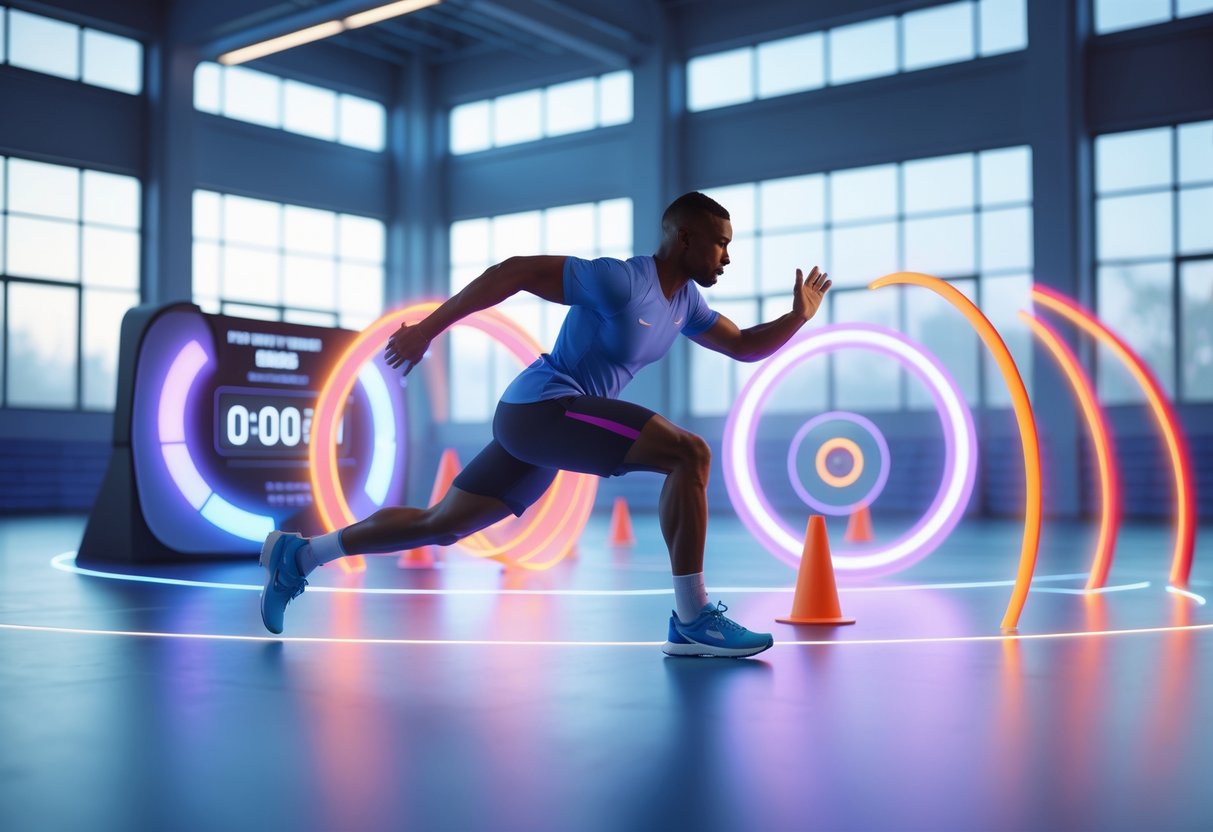
Simple ball drop tests and reaction ball drills help your peripheral nervous system respond faster to visual cues.
You’ll see direct improvements in reaction speed by practicing these exercises with unpredictable stimuli.
Ball Drop and Ruler Test
The ball drop exercise pushes your brain to process visual signals more quickly.
Grab a partner and ask them to hold a tennis ball or ruler at shoulder height about 5 yards away.
When your partner drops the ball at random, you sprint and try to catch it before it bounces twice.
This drill really sharpens your first-step quickness and visual processing.
Setup Requirements:
- Tennis ball or 30cm ruler
- 5-yard distance between partners
- Clear floor space
For the ruler test, have someone hold a ruler at the top while you place your thumb and finger at the bottom without touching.
When they drop it, snatch it as fast as you can.
Progression Tips:
- Start with slower drops
- Increase the distance gradually
- Try sitting or kneeling to mix it up
- Use colored balls for a little extra challenge
Do these drills for 10-15 reps.
You’ll notice your peripheral nervous system adapts pretty quickly if you stay consistent.
Reaction Balls and Wall Juggles
Reaction balls bounce unpredictably because of their six sides.
That weird bounce forces your nervous system to adjust and react in real time.
Stand about 2 meters from a wall and throw the reaction ball at shoulder height.
Catch it after one bounce, paying attention to the quick changes in direction.
Basic Wall Drill Steps:
- Stand 2 meters from the wall
- Throw ball at shoulder height
- Catch after one irregular bounce
- Repeat for 30 seconds
Wall juggling boosts hand-eye coordination and reaction speed together.
Start with one ball and, when you’re ready, alternate throws with both hands.
Advanced players can toss two reaction balls—throw one while catching the other.
That’ll really challenge your brain and coordination.
Training Schedule:
- Week 1-2: Single ball, 3 sets of 30 seconds
- Week 3-4: Alternating hands, 3 sets of 45 seconds
- Week 5+: Dual balls, 3 sets of 60 seconds
Stick with these exercises daily and you’ll see results within a few weeks.
Cognitive Training for Faster Reactions
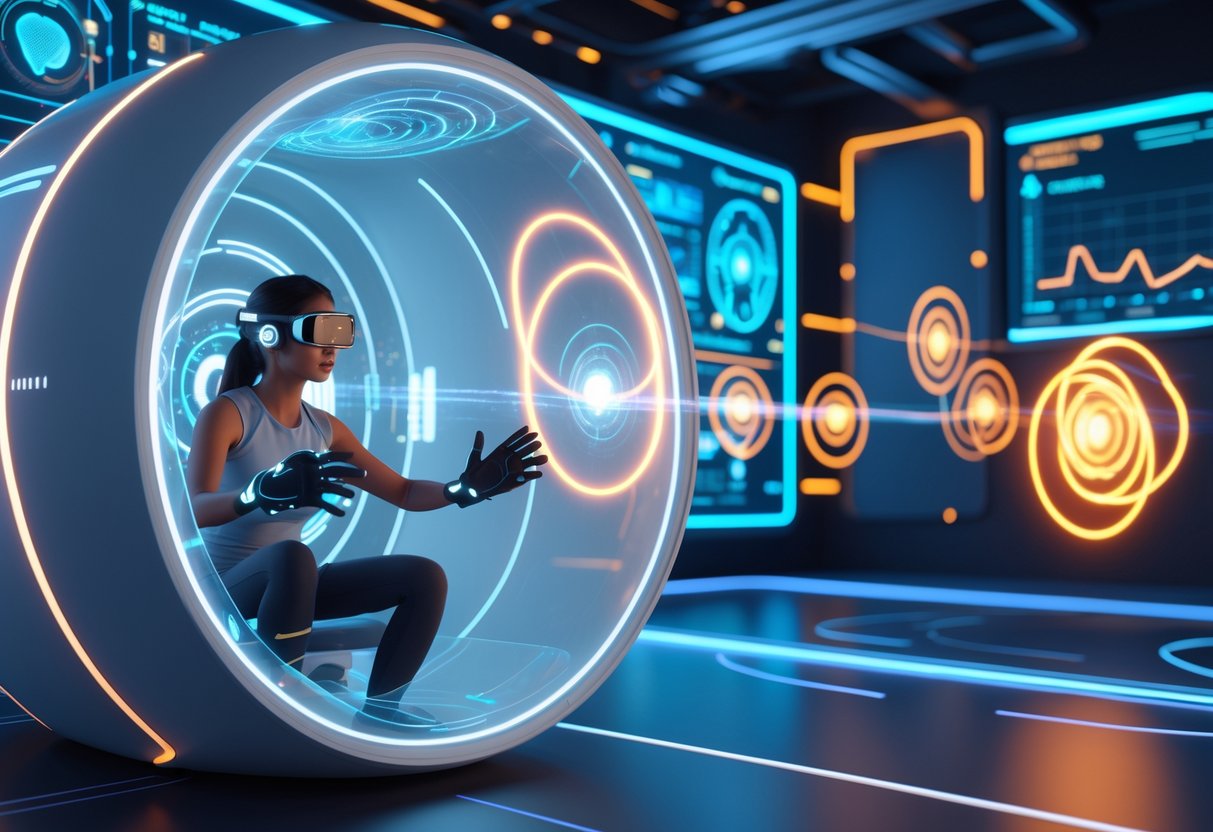
Cognitive training helps your brain process information faster and make snap decisions.
If you stick with regular mental exercises and brain training games, you can seriously upgrade your in-game reaction speed.
Brain Training Games
Brain training games make sharpening your reaction time way more fun.
They push your brain to handle visual cues, patterns, and sudden changes—just like you’d see in a real match.
Quick win: Download free apps like Lumosity or Peak and play reaction-based exercises for about 10 minutes a day.
Some popular options:
• Pattern recognition games – these help you anticipate better
• Visual tracking exercises – they boost your peripheral awareness
• Quick decision tasks – you’ll get better at those split-second choices
• Memory sequence challenges – these improve your processing speed
A lot of esports athletes swear by dual n-back training to boost working memory and reaction speed.
It’s tough, since you need to track both visual and audio sequences at once.
Heads up: Don’t rush into pricey “premium” brain game subscriptions.
The free versions usually give you all the basics you need.
If you put in 15-20 minutes a day, research says you’ll see measurable improvements in reaction time within 2-3 weeks.
The trick is to mix up the games so you’re challenging more than just simple reflexes.
Cognitive Exercises for Sharpness
Some cognitive exercises go straight for the mental skills that matter most in gaming.
They teach your brain to spot patterns and react under pressure.
Mindfulness meditation can really help you focus and cut out distractions.
Just 10 minutes a day can make a difference when matches get intense.
Visual focus drills are also great:
• Practice following moving objects on screen
• Try peripheral vision training
• Work on eye movement coordination
• Switch targets quickly to improve accuracy
Decision-making exercises help you pick options faster.
Try online reaction time tests that make you choose between colors, shapes, or directions in a flash.
Anticipation training is another trick—watch gameplay videos and predict what opponents will do next.
A lot of pros use this to keep ahead of the competition.
Gaming expert James Connolly says, “cognitive sharpness exercises create the mental foundation for lightning-fast in-game reactions.”
Consistency and Progressive Training
You’ll get the most out of cognitive training if you stay consistent and ramp up the difficulty over time.
If you just practice randomly, you probably won’t see much change.
Daily training schedules work well when you split them into short, focused sessions:
• Week 1-2: 10-15 minutes of basic exercises
• Week 3-4: 15-20 minutes with mixed challenges
• Week 5+: 20-25 minutes on advanced scenarios
Make things harder as you go.
Start with simple reaction tasks and add more stimuli, speed things up, or combine challenges.
Keep track of your progress to stay motivated and see where you need work.
Apps that record reaction times or a simple training log can help you spot trends.
Change up your training every week so your brain doesn’t get too comfortable.
Here’s a simple plan:
| Week Focus | Primary Exercises | Secondary Focus |
|---|---|---|
| Visual processing | Pattern recognition | Peripheral awareness |
| Decision speed | Choice reaction tasks | Anticipation drills |
| Mental flexibility | Task switching | Working memory |
| Focus training | Mindfulness practice | Distraction resistance |
Try mixing cognitive training with your usual gaming practice.
After a few weeks, you’ll probably notice a real difference in your performance.
The Role of Video Games in Reaction Speed
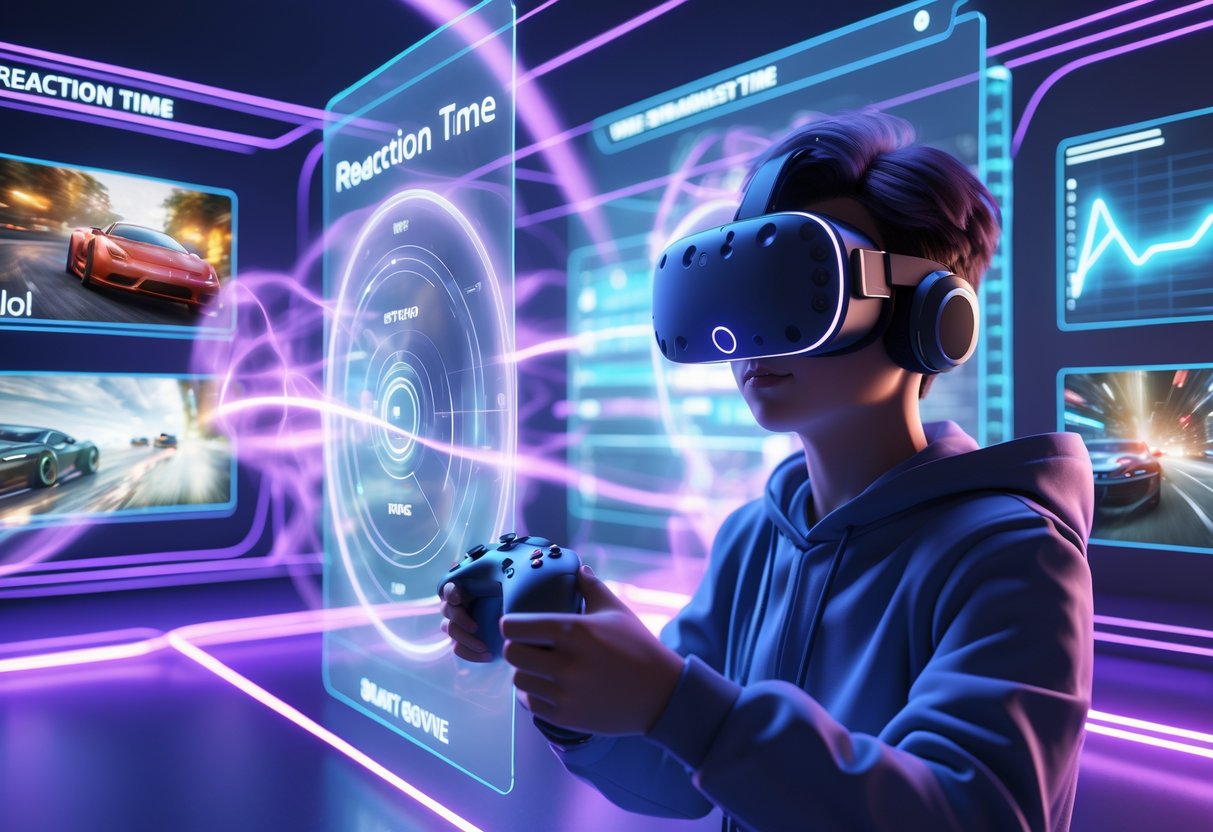
Video games can really boost your reaction times by training your visual processing and motor response systems.
Action games and simulations push you to make split-second decisions, which leads to the biggest improvements.
Improving Hand-Eye Coordination
Video games are fantastic for building the neural pathways between what you see and how you move.
When you play fast-paced games, your brain learns to process visual info at a much faster rate.
Studies show that gamers react more quickly in lots of tasks—not just in games.
Games train your brain’s visual attention networks to spot changes faster.
Some of the main improvements:
- Faster visual processing
- Better contrast detection
- Improved spatial awareness
- Sharper motor control
You get these benefits by constantly practicing stimulus-response routines.
Your brain gets better at turning what you see into quick actions.
Games that demand perfect timing, like rhythm games or first-person shooters, really boost your hand-eye coordination.
These games make you react instantly to visual cues.
Even people who never gamed before showed big improvements after just ten days of training.
The boost sticks around, too—you’ll notice it in everyday activities that need quick reactions.
Action and Simulation Games
Action games stand out for improving reaction time more than other genres.
They throw you into high-pressure situations that feel a lot like real-world decision-making.
Best game types for reaction speed:
- First-person shooters
- Racing simulators
- Real-time strategy games
- Fighting games
Action games help you beat the Simon Effect, which is when mixed signals slow down your response.
Regular players learn to cut through that delay.
Racing simulators are great because you have to adjust constantly to changing conditions.
You process info about speed, position, and obstacles all at once.
The mental demands of these games build your ability to make quick calls under pressure.
You’ll find those skills carry over to things like sports or driving.
One hour of action gaming a day for ten days can noticeably speed up your reactions.
Consistency is the real game-changer here.
Lifestyle Factors Impacting Reaction Time
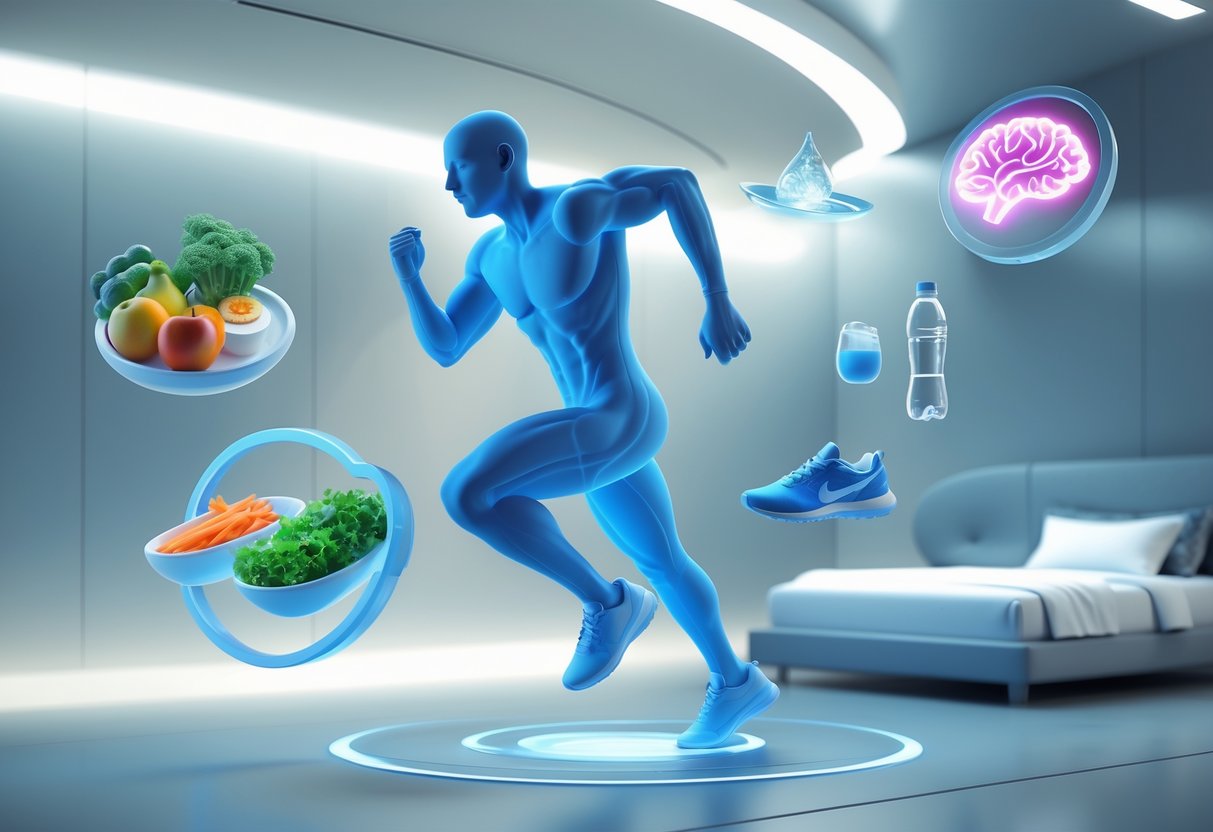
Your daily habits shape your reaction speed way more than your genes do.
Sleep, hydration, and brain health all play a big part in how fast you process visual info and respond to opponents.
The Power of Adequate Sleep
Getting 7-9 hours of solid sleep each night gives you the best shot at fast reaction times.
Your brain uses this downtime to clear out waste and reset stress hormones that slow you down.
Research shows a clear difference:
- 7-9 hours: Best reaction speed
- 6 hours: 15-20% slower
- 5 hours: 25-30% slower
- 24 hours awake: Up to 50% slower
Quality matters just as much as quantity.
REM sleep helps you lock in motor skills and visual processing.
Keep your room cool (18-20°C), dark, and stick to a regular bedtime.
Most people hit their reaction time peak 2-3 hours after waking up and again in the late afternoon.
A lot of pro gamers plan their practice around these times.
Effects of Sleep Deprivation
Not getting enough sleep does real damage to your reaction speed, and caffeine won’t fix it.
Even a bit of lost sleep messes with the neural pathways that control hand-eye coordination.
Heads up: One bad night can slow your reactions by 20-30% the next day.
Sleep loss hits:
- Visual processing
- Decision accuracy
- Motor control
- Focus during long sessions
Your reaction times don’t just get slower—they get unpredictable.
You might land a perfect shot, then completely miss the next one.
That inconsistency drives a lot of players crazy.
To recover, you’ll need 2-3 nights of good sleep.
Hydration and Brain Health
Your brain is about 75% water, so staying hydrated is key for fast reactions.
Even just 2% dehydration can slow you down by 10%—which is enough to lose your edge.
Hydration tips:
- Drink 500ml water 2 hours before gaming
- Sip 150-250ml every 15-20 minutes while playing
- Check that your urine is pale yellow
Dehydration cuts blood flow and oxygen to your brain, especially the part that processes visuals and coordinates movement.
Quick tip: Keep a water bottle handy and take a sip between rounds.
Try not to overdo the caffeine—it can dehydrate you and mess with your aim.
If you’re gaming for hours, a pinch of sea salt in your water or a drink with natural electrolytes can help more than sugary energy drinks.
Nutrition and Supplements for Better Reaction Time
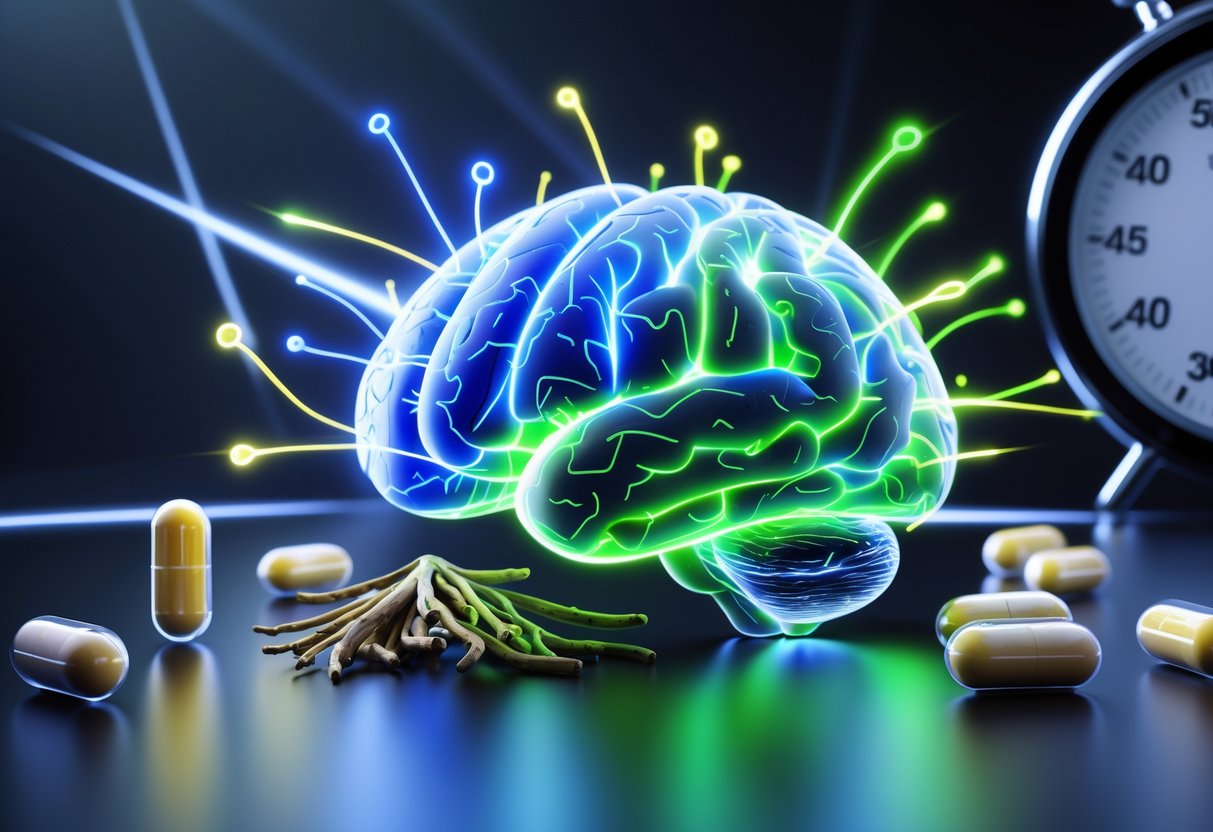
Some nutrients can really help your reaction speed and mental sharpness.
Antioxidants protect your brain cells, caffeine perks up your alertness, and polyphenols support long-term brain health.
Key Nutrients and Antioxidants
Lutein gets a lot of attention for improving reaction time.
This antioxidant builds up in your brain and helps you process visual info faster.
Leafy greens like spinach and kale are packed with lutein.
Studies say people with more lutein process info 10-20% quicker than those with less.
Omega-3 fatty acids help your brain cells communicate.
These healthy fats speed up the signals in your nervous system.
Fish oil supplements with 1000-2000mg of EPA and DHA are common.
A lot of gamers notice better focus after a couple weeks.
B-vitamins make neurotransmitters that control reaction speed.
B6, B12, and folate keep your nerves working right.
You’ll find B-vitamins in energy drinks, but foods like eggs and meat are better sources.
If you’re low on these, your reaction time can drop by 15-25%.
Role of Caffeine
Caffeine blocks adenosine receptors in your brain, so you don’t get those tiredness signals. Within 15-30 minutes, you’ll usually notice you’re more alert and your reactions pick up speed.
Most people feel best with 75-150mg of caffeine—about a cup of coffee or half an energy drink. That’s enough for a noticeable boost.
Studies show caffeine can help you react 5-10% faster. The benefits usually hit their peak around 30-45 minutes in and stick around for 3-4 hours.
If you’re gaming competitively, timing your caffeine matters. Try to have it about 30 minutes before a big match or training session.
Energy drinks often toss in extra stimulants like taurine, but honestly, plain coffee or caffeine tablets do the trick—no need for the extra sugar.
Just a heads up: your body gets used to caffeine fast if you use it every day. Taking breaks now and then helps keep that reaction-time edge.
Importance of Polyphenols
Polyphenols, those plant compounds, actually protect your brain cells. They also get blood flowing to the parts of your brain that make split-second decisions.
Flavonoids—found in berries and dark chocolate—speed up your brain’s processing. These little guys cross into your brain and help keep your neurons healthy.
You’ll see the best effects from:
- Blueberries: One cup a day gives you over 13,000 antioxidant units.
- Green tea: Packs both caffeine and helpful polyphenols.
- Dark chocolate: Go for 70% cocoa or higher for focus-boosting flavanols.
Anthocyanins in purple and red foods can actually make you react faster—sometimes within hours. Cherry juice and grape extracts really stand out here.
If you eat polyphenols regularly, you’ll build up long-term protection for your brain. That helps you keep those quick reflexes as you get older, unlike caffeine, which only gives a short-term boost.
Green tea extract supplements offer a concentrated dose of polyphenols without a caffeine overload. Most people do well with 300-600mg a day.
Mindfulness and Stress Management Techniques
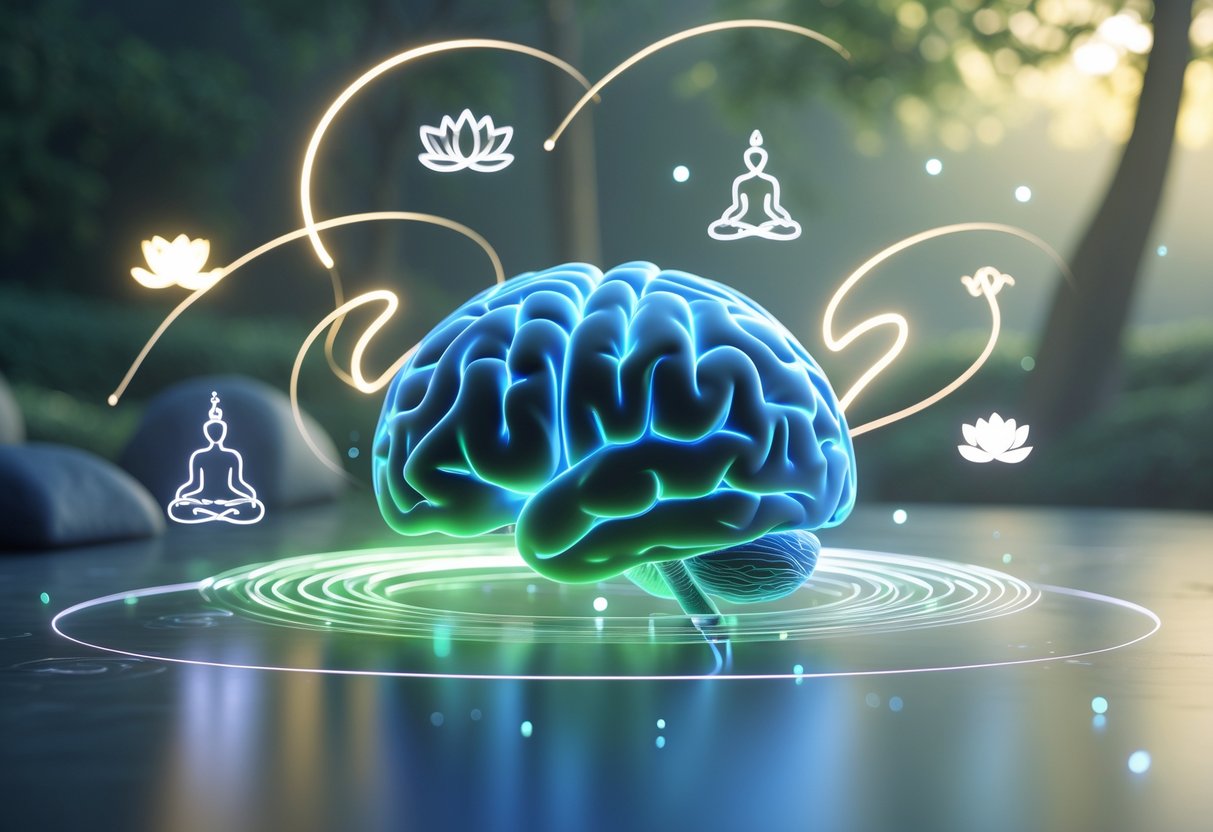
When stress spikes in the middle of a tough gaming session, your reaction time tanks. Meditation gives you tools to stay cool, while mindfulness helps you respond to game situations instead of just reacting.
Practising Meditation
If you meditate regularly, you’ll build a mental foundation for faster, calmer reactions when the pressure’s on. Focus meditation works especially well for gamers—it teaches your mind to lock onto one thing, like tracking an opponent.
Start small. Try five minutes of breath-focused meditation each day. Just sit comfortably and pay attention to your breathing. If your mind wanders to yesterday’s loss or tomorrow’s big match, gently bring it back.
Body scan meditation helps you find where you’re holding tension that slows your reactions. Lie down and mentally check in with each body part, from your toes up. Gamers often hold stress in the shoulders, jaw, or hands.
A lot of esports pros use these techniques between matches. Consistency matters more than how long you meditate. Five focused minutes really do beat twenty distracted ones.
Here’s a quick trick: try the “4-7-8” breathing method before ranked matches—inhale for 4, hold for 7, and exhale for 8.
Guided Meditation and Mindfulness
Guided meditation takes the guesswork out of your practice. Apps like Headspace or Calm even offer sessions for gaming, tackling performance anxiety and focus issues.
Awareness meditation teaches you to watch your gaming mindset without judging yourself. Instead of getting mad at a mistake, you notice the anger and let it go. That way, your next play isn’t affected.
Start with ten-minute guided sessions that focus on:
- Being present in the moment
- Regulating your emotions
- Managing your stress response
A lot of guided meditations use visualization. Picture yourself making perfect plays while staying totally calm. This kind of mental practice really does carry over to real games.
Mindful gaming means checking in with your emotions during play. If you feel frustration building, use your breathing techniques to reset before it messes with your timing.
Yoga for Calmer Responses
Yoga blends movement with mindfulness, so it’s perfect if you can’t sit still for meditation. Mindful movement relieves tension and sharpens mental focus.
Try these simple yoga stretches for common gaming aches:
| Pose | Benefit | Duration |
|---|---|---|
| Neck rolls | Relieves screen tension | 30 seconds |
| Shoulder shrugs | Lowers upper body stress | 10 reps |
| Wrist circles | Prevents RSI, improves dexterity | 15 seconds each |
| Cat-cow stretches | Fixes hunched posture | 1 minute |
Gentle yoga before gaming primes your nervous system for top performance. The mix of slow breathing and movement activates your body’s chill-out mode.
Don’t go too hard with yoga right before gaming, though. Stick to light stretching and breathing for the best results.
Even ten minutes of yoga can really help your stress response during clutch moments.
Monitoring and Sustaining Your Progress
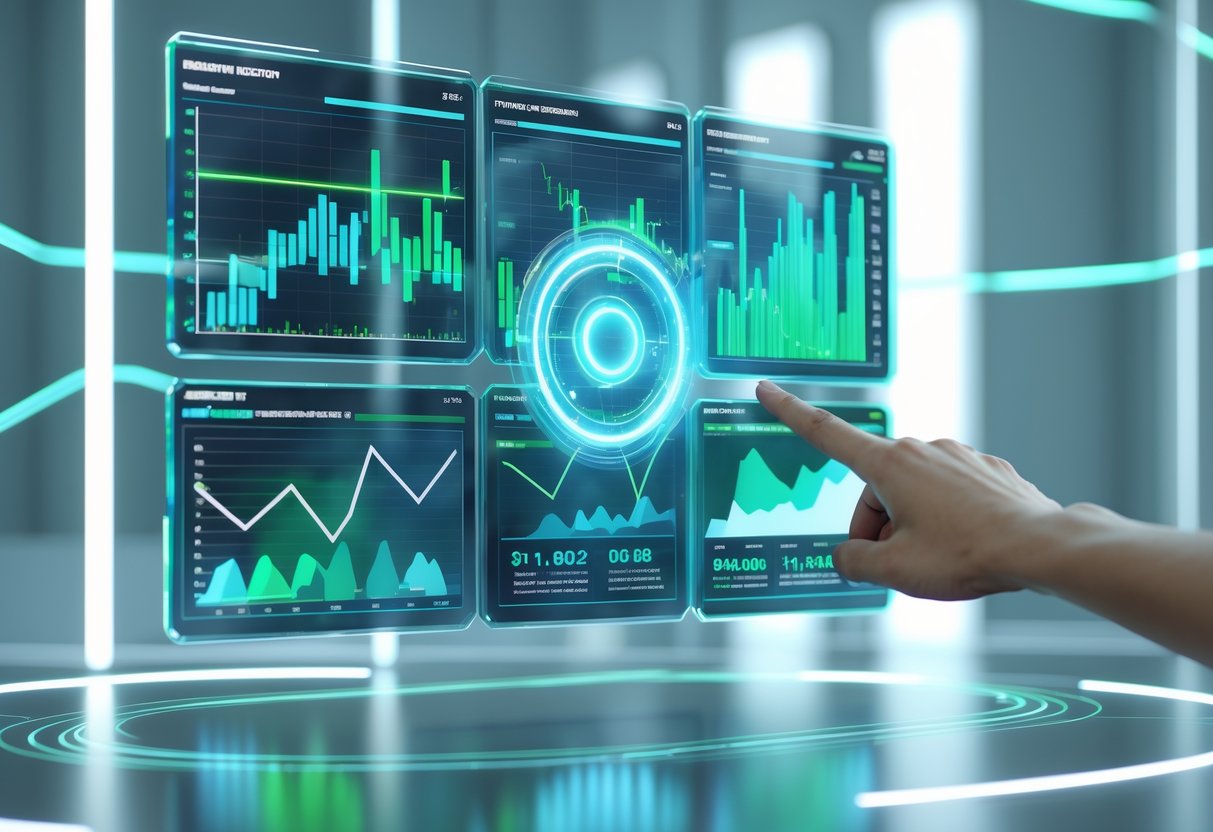
If you want to improve your reaction time, you’ve got to track your progress and make smart training choices. The best approach mixes regular measurement with a few different training methods.
Tracking Improvements
You need reliable ways to see if you’re getting faster. Standardized online tests work best—they measure your reaction time down to the millisecond.
Watch these key numbers:
- Your average reaction time over 10 tries
- Your fastest single attempt each session
- How much your times jump around
- Weekly averages
If you shave off more than 40 milliseconds, that’s real improvement—not just a fluke.
Make a simple tracking sheet with date, average time, and maybe a note about how you slept or felt that day. Many players find their exercises work best at the same time every day.
Don’t stress about daily ups and downs. Your brain naturally varies by 10-15% depending on sleep, food, and stress.
Check your progress weekly, not daily. That gives you a better sense of your real improvement.
Integrating Multiple Approaches
Mixing up your training methods gets you better results than sticking to just one thing. Studies say people who use a combo of approaches can improve their reaction time by up to 45% in six months.
Try pairing:
- Physical exercise with reaction time tests
- Gaming practice with visual training
- Sleep optimization with cognitive drills
Pick two or three methods that fit your life. For a gamer, you might combine aim trainers, good nutrition, and a solid sleep routine.
Before each session, spend five minutes on reaction time drills. It’s a quick way to get your brain in gear for competitive play.
Pro esports athletes layer these methods. They keep up their fitness, run game-specific drills, and use cognitive tools throughout the week.
Stick with your chosen methods consistently, instead of jumping from one to another all the time.
Maintaining Long-Term Gains
If you stop practicing, your reaction time will slip back. The benefits usually start fading after two to four weeks without training.
To keep your edge:
- Test yourself once a week for five to ten minutes
- Keep playing games that require quick reactions
- Don’t skip your exercise routine
- Aim for 7-8 hours of sleep every night
Gamers who make reaction training part of their regular routine hold onto their gains much better. That could mean warming up with aim trainers or just playing fast-paced games often.
Don’t quit all training when you hit your goal. Your brain needs regular challenges to stay sharp.
Set a long-term schedule you can actually stick to. Three fifteen-minute sessions a week usually keep you in top form once you’ve improved.
Think of reaction time maintenance like keeping up your physical fitness—it’s just part of being a serious gamer.
Frequently Asked Questions
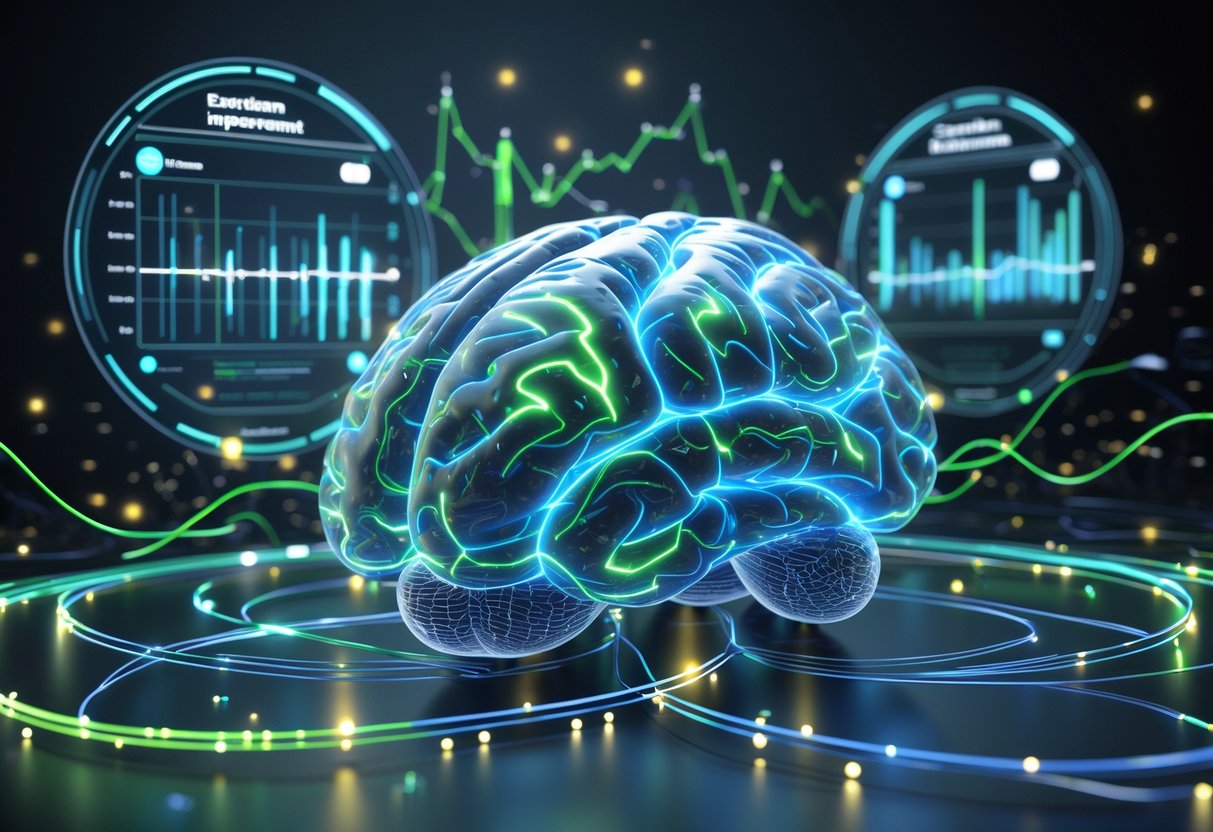
Gamers and athletes ask a lot of the same questions about getting faster reflexes—from what methods work best to what counts as “quick.” Here’s a rundown of practical training tips, useful tools, and what to expect as you work on faster reflexes.
How can I enhance my reflexes for competitive sports?
Physical training is the backbone of faster reflexes. Try agility ladder drills, plyometrics like box jumps, and sport-specific moves that push your coordination.
Grab a reaction ball—they bounce unpredictably, so you have to react on the fly. Great for hand-eye coordination.
Mental prep matters too. Visualization helps your brain rehearse quick responses before you hit the field or court.
Want a quick win? Do fifteen minutes of agility ladder drills three times a week. You’ll notice a difference in a month.
What are effective exercises for boosting one’s alertness in gaming?
For gaming, you need both physical and mental training. Aim trainers and reaction games improve your mouse skills and visual speed.
Try cognitive games—puzzles and reaction challenges—to sharpen your brain’s processing. Many pros work these into their routines.
Hand and wrist exercises keep fatigue at bay during long sessions. Strong, loose hands react way faster than tired, stiff ones.
Don’t forget your gear. A high-refresh-rate monitor and a low-latency mouse can give you a real edge.
Could you suggest some tools or apps designed for reaction speed training?
There are plenty of digital tools to help you train faster. Reaction light systems set up real-time drills that test your speed and focus.
Mobile apps make it easy to train anywhere. Look for ones that track your progress and mix up the challenges.
Smartwatches and fitness trackers can log your results and show you where you need to improve.
Virtual reality systems offer immersive training that mimics real scenarios and keeps things interesting.
Is there a benchmark for what’s considered a swift response time?
Most people react to visual cues in 200-300 milliseconds. Pro athletes often get under 200 milliseconds in their sport.
Gamers need different numbers depending on the game. FPS players usually shoot for under 180 milliseconds.
Age plays a big role. Younger folks react faster, but training helps you stay sharp as you get older.
Before you start training, try an online reaction time test to set your baseline.
What’s the typical amount of time it takes for a person to react?
Usually, people respond to visual stuff in 200-300 milliseconds. That covers the time your brain sees something and tells your muscles to move.
You’ll react to sound even quicker—around 150-200 milliseconds. That’s why races use a starting pistol instead of a light.
If you have to make a complex choice, it takes longer—sometimes 500 milliseconds or more.
Stuff like fatigue, stress, and distractions can really slow you down. When you’re well-rested and focused, you’ll react much faster.
Are there proven techniques to develop quicker decision-making abilities?
Meditation and mindfulness training can really sharpen your focus and cut down on that mental clutter we all get sometimes.
If you practice regularly, you’ll find it easier to stay present and aware, even when the pressure’s on.
Pattern recognition exercises make your decision-making faster. The more situations you work through, the quicker you’ll spot patterns and know how to respond.
Breathing exercises do wonders for reducing stress and clearing your mind. When things get tense, controlled breathing helps you keep your cool and react fast.
Quick win: Try spending just 10 minutes a day on meditation or breathing exercises. You might notice better focus and quicker decisions in as little as two weeks.

